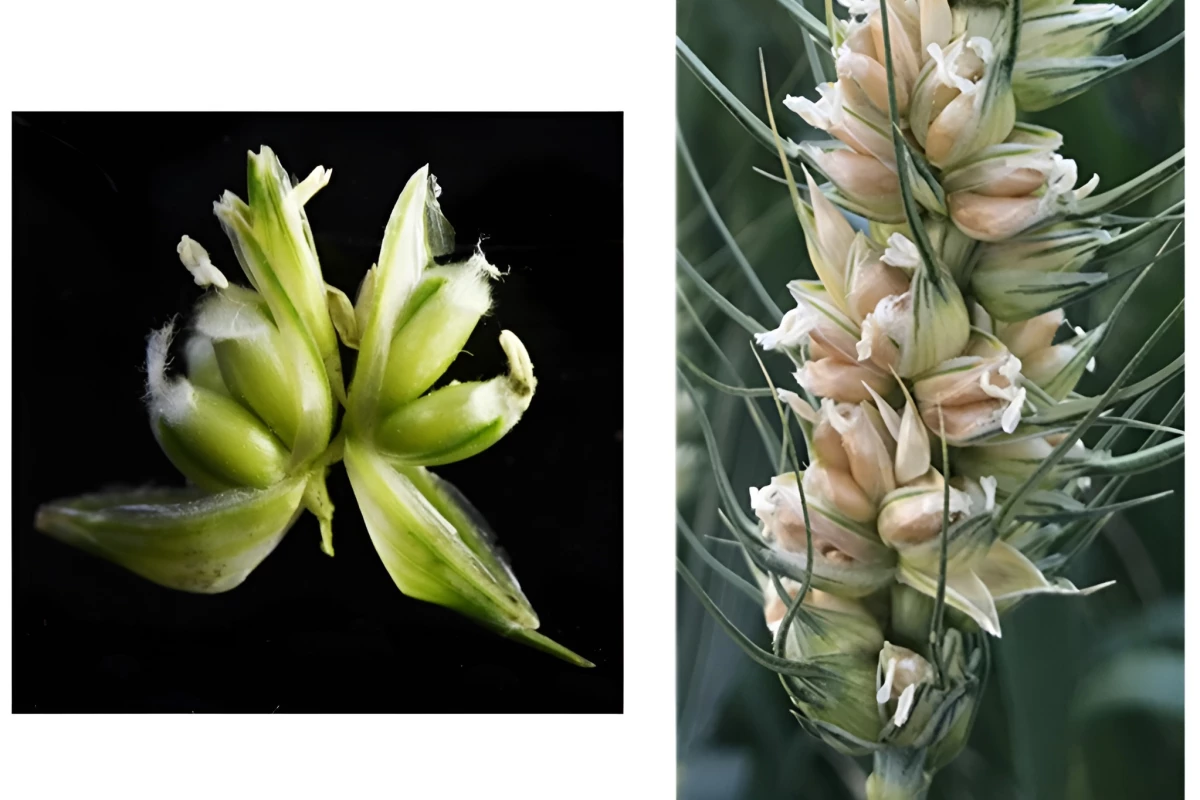Science
Scientists Unlock Genetic Secret to Triple Wheat Grain Yields

Researchers from the University of Maryland have made a significant breakthrough in wheat genetics that could potentially triple grain yields from the same amount of land. This advancement stems from the discovery of a genetic mechanism that allows certain wheat plants, known as multi-ovary (MOV) plants, to produce multiple grains from each floret, as opposed to just one.
Traditionally, each floret in a wheat plant’s seed head generates a single ovary, resulting in one grain. However, MOV plants can have up to three ovaries per floret, leading to a substantial increase in grain production. Until recently, the genetic basis for this phenomenon was unclear, but the researchers have now identified the dormant gene responsible for this trait.
Understanding the Genetic Mechanism
The team conducted a comprehensive analysis of the DNA of MOV wheat, comparing it to that of conventional bread wheat. They found that the gene WUSCHEL-D1 (WUS-D1), which typically remains inactive, is “switched on” in MOV wheat. This gene plays a crucial role in enhancing the development of tissues that form female flower parts, including pistils and ovaries.
Associate Professor Vijay Tiwari, a co-author of the study, expressed optimism about the implications of this discovery. He stated, “Pinpointing the genetic basis of this trait offers a path for breeders to incorporate it into new wheat varieties, potentially increasing the number of grains per spike and overall yield.” This statement highlights the potential for significant advances in agricultural productivity, which is vital for meeting the demands of a growing global population.
Future of Wheat Breeding
The research team believes that by activating the WUS-D1 gene in cultivated wheat plants, they can enhance grain yields further. The findings were published in the journal Proceedings of the National Academy of Sciences, indicating the credibility and significance of the study within the scientific community.
The potential to triple grain yields could have far-reaching implications for food security and agricultural sustainability. As scientists continue to explore the possibilities of gene editing and breeding techniques, the agricultural sector may be on the brink of a new era in crop production.
This advancement not only represents a scientific achievement but also a crucial step toward addressing the challenges of feeding the world’s population sustainably in the coming decades.
-

 Science2 months ago
Science2 months agoInventor Achieves Breakthrough with 2 Billion FPS Laser Video
-

 Health2 months ago
Health2 months agoCommunity Unites for 7th Annual Into the Light Walk for Mental Health
-

 Top Stories2 months ago
Top Stories2 months agoCharlie Sheen’s New Romance: ‘Glowing’ with Younger Partner
-

 Entertainment2 months ago
Entertainment2 months agoDua Lipa Aces GCSE Spanish, Sparks Super Bowl Buzz with Fans
-

 Health2 months ago
Health2 months agoCurium Group, PeptiDream, and PDRadiopharma Launch Key Cancer Trial
-

 Entertainment2 months ago
Entertainment2 months agoMother Fights to Reunite with Children After Kidnapping in New Drama
-

 Top Stories2 months ago
Top Stories2 months agoFormer Mozilla CMO Launches AI-Driven Cannabis Cocktail Brand Fast
-

 World2 months ago
World2 months agoIsrael Reopens Rafah Crossing After Hostage Remains Returned
-

 World2 months ago
World2 months agoR&B Icon D’Angelo Dies at 51, Leaving Lasting Legacy
-

 Business2 months ago
Business2 months agoTyler Technologies Set to Reveal Q3 Earnings on October 22
-

 Health2 months ago
Health2 months agoNorth Carolina’s Biotech Boom: Billions in New Investments
-

 Entertainment2 months ago
Entertainment2 months agoRed Sox’s Bregman to Become Free Agent; Tigers Commit to Skubal








